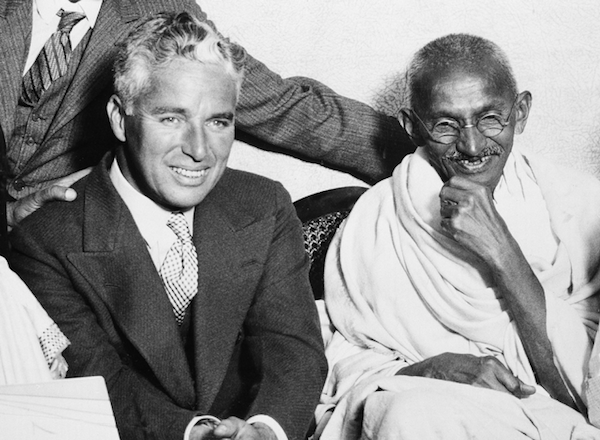Movie review by Greg Carlson
With almost surgical precision, filmmakers Peter Middleton and James Spinney dissect the life and work of “The Real Charlie Chaplin,” a worthwhile addition to the many studies of one of the most recognizable screen performers in cinema history. Their documentary functions partly as critical biography, using Chaplin’s narrative preoccupations as the basis of a psychoanalytical reading of the man’s oeuvre — and vice versa. But the film also moves to scrutinize the auteur’s behind-the-scenes behavior, addressing Chaplin’s sexual predilection for adolescents. Three of the four women he would marry — Mildred Harris, Lita Grey, and Oona O’Neill — were teenagers at the time of their respective unions.
Middleton and Spinney access Chaplin’s incomparable filmography to illustrate their film’s central premise: that Chaplin was so closely identified with the character of the Tramp that we still struggle to separate the creation from the creator. Readers of David Robinson’s essential 1985 volume “Chaplin: His Life and Art” and viewers of Richard Schickel’s 2003 film “Charlie: The Life and Art of Charles Chaplin” have already witnessed, to a significant degree, the reconciliation of Chaplin and the part he played for so long. Middleton and Spinney decide against the conventional talking head approach favored by Schickel, opting instead for a hit-or-miss series of reenactments (not unlike Clio Barnard’s technique in “The Arbor”) in which actors lip-synch to audio recordings.
Much more consistently engaging is the liberal use of archival material, particularly in the spectacular early sections that contemplate not only the origins of the Little Fellow’s iconic costume but also the way in which that outfit anticipates a personality, encompassing in wordless pantomime all the pluck, tenacity, sexual fluidity, mischief, pathos, fearfulness, and desire to be treated with dignity that would endear our ultimate underdog to millions of viewers. The filmmakers delight in showing clip after clip of Chaplin impersonators practicing the twirl of the cane, the angle of the bowler, and the twitch of the mustache.
Just as it anchors the design perfection of Olly Moss for Criterion’s “The Great Dictator,” that latter item will return later in the film when Middleton and Spinney explore the Tramp’s most unexpected doppelganger: Adolph Hitler. The future tyrant was born just four days after Chaplin, and the similarities in their impoverished backgrounds have enough juice to link the two (see also Brownlow and Kloft’s “The Tramp and the Dictator”). Chaplin’s political consciousness would later lead to an awful cycle of FBI “leaks” — outright fabrications — to Hedda Hopper, who would then publish columns that Hoover would quote to escalate the bureau’s attacks on Chaplin.
The latter portions of the feature are illustrated with the oft-excerpted home movie footage of Chaplin with Oona and children at their Manoir de Ban estate in Switzerland, and they touch on the familiar beats of political exile ahead of the moving acceptance of an honorary Academy Award in 1972. At one point, we hear narrator Pearl Mackie (who is terrific from start to finish) say, “When you ask for the real Charlie Chaplin, a thousand voices reply.” No doubt each new generation will reexamine and reassess the offscreen Chaplin even as the monumental achievement expressed through his body of work will continue to seduce freshly-stunned viewers.
